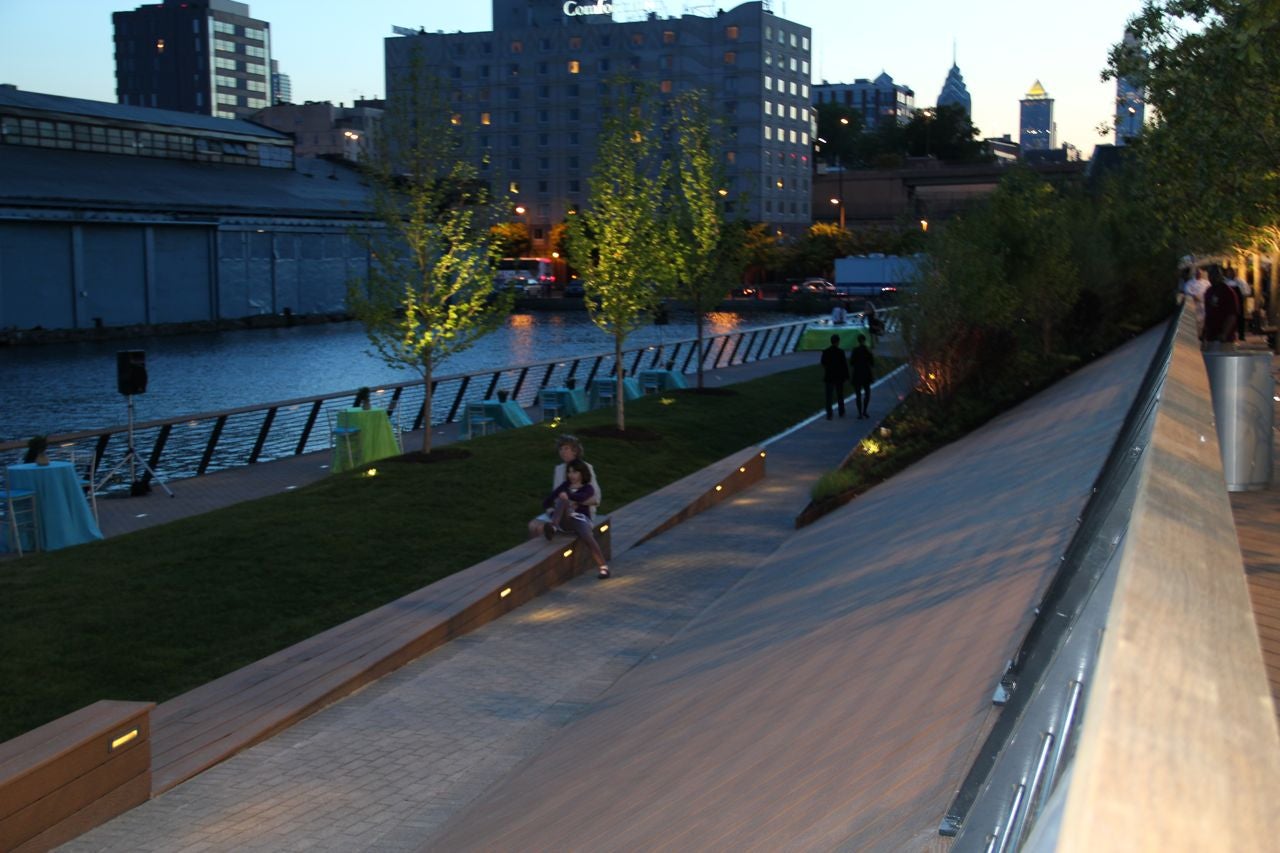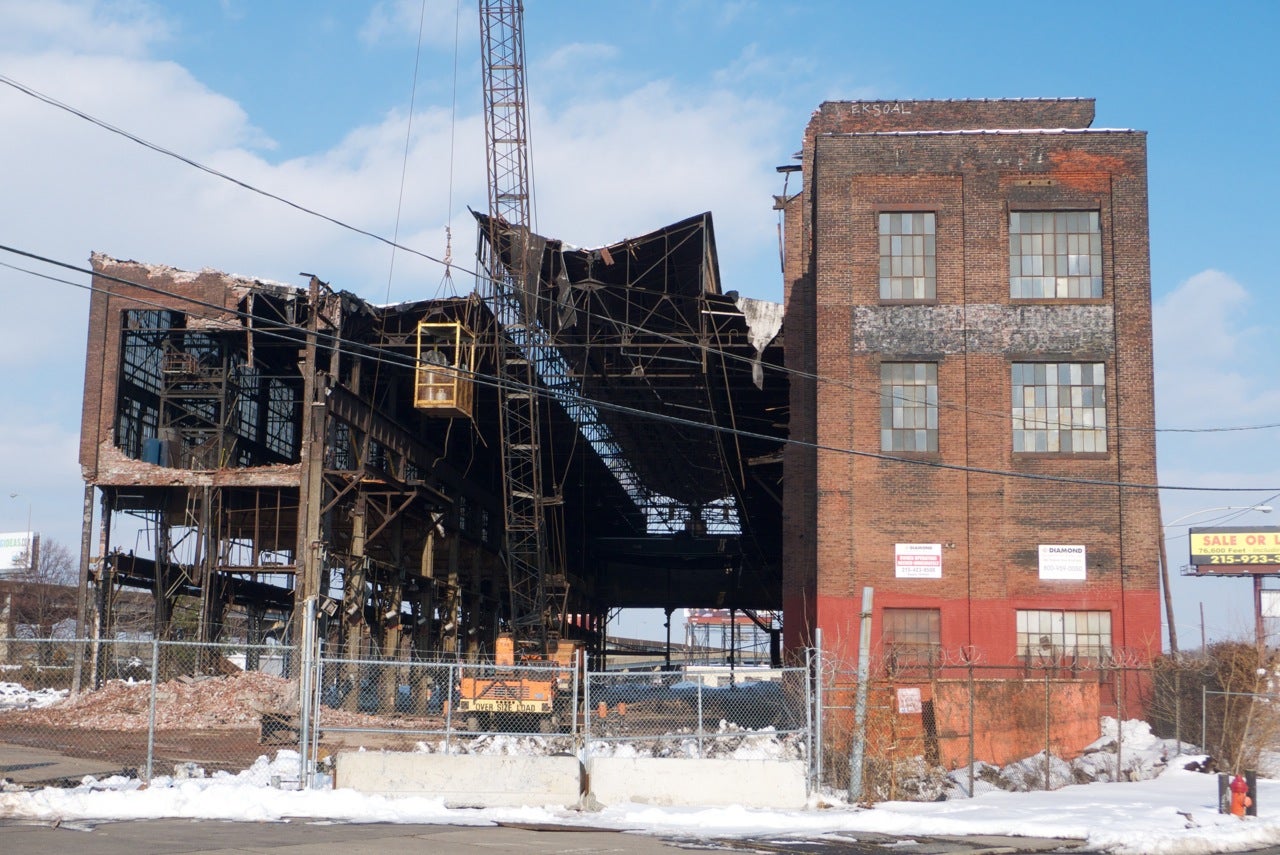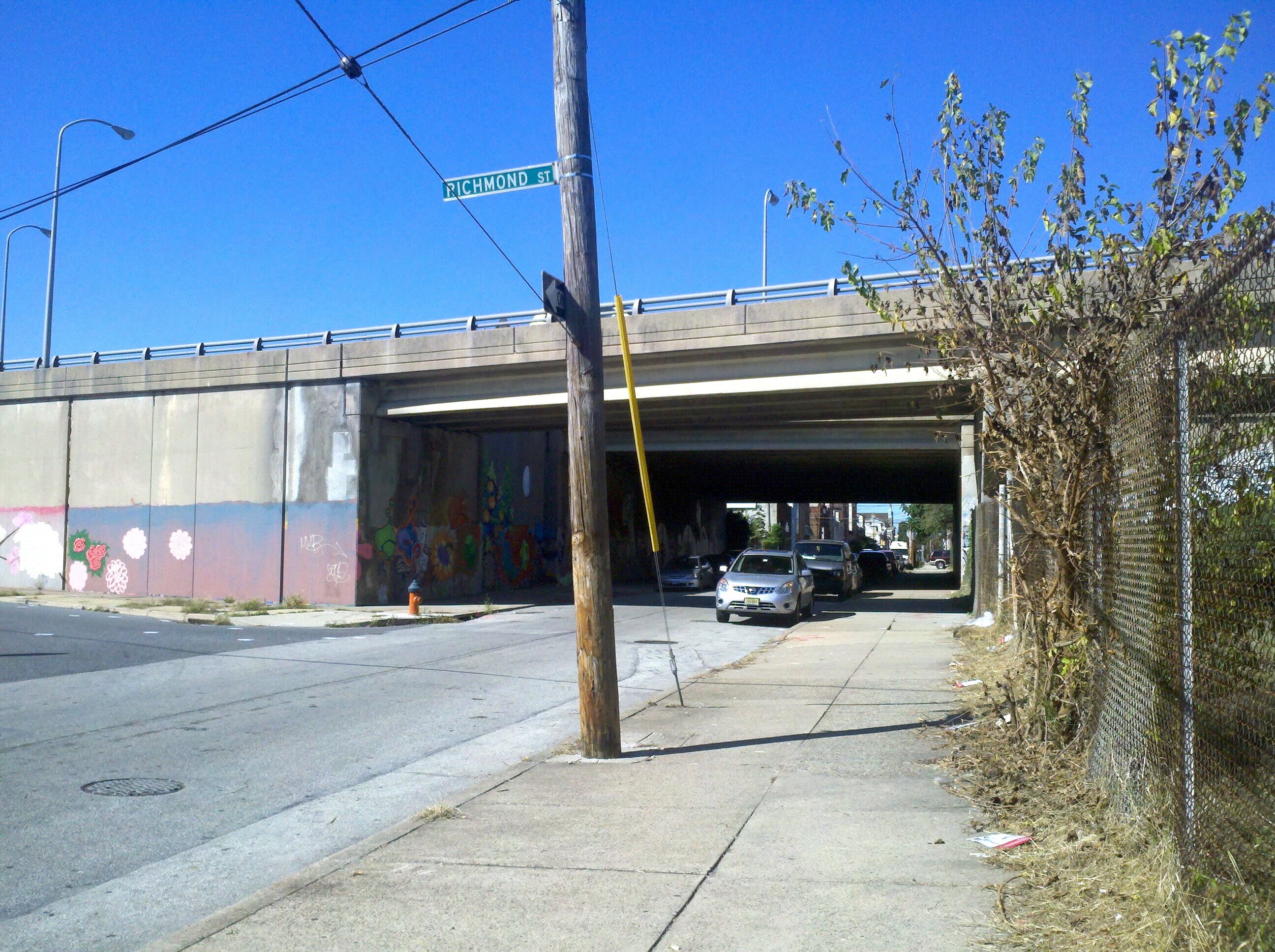2011: A year of planning milestones, and some development controversy
It was a year of planning milestones in Philadelphia.
The Philadelphia City Planning Commission adopted Philadelphia2035 – the first city-wide comprehensive plan in 50 years – in June.
The plan, based on staff research and citizen input, set milestones with broad goals including more open space, bike lanes and preservation efforts, and specific targets such as extending the Broad Street subway to the Navy Yard, an improved Delaware River waterfront, and a rejuvenated Market Street that is once again the city’s ‘Main Street.’
That city-wide plan will be complemented by 18 district-level plans. These plans expand on the principles in the city-wide plan and flesh them out with more specific goals tailored to each district, or cluster of similar neighborhoods. Planners completed the first two district plans, for Lower South, which includes the port and stadium district, and West Park, which includes the neighborhoods around the western portion of Fairmount Park, after sessions at which district residents brainstormed and ranked options.
The Lower South plan calls for improved public access to the waterfront, improved mass transit and shipping routes, and better connections between neighborhood amentities – such as FDR Park – and neighborhoods.
The West Park plan focuses on improvements in and around Centennial Park and City Line Avenue, and the relatively large amount of vacant properties contained in the neighborhoods of East Parkside, West Parkside, and Cathedral Park. Centennial Park, home to the Philadelphia Zoo, the Please Touch Museum, the Mann, and other attractions, brings about 1.5 million annual visitors to the district, but planners believe there needs to be more emphasis placed on amenities for people who live nearby.
At the same time, the neighborhoods should have more restaurants and other places that would keep visitors to these popular attractions in the neighborhood longer, and encourage them to spend money there.
Work on the next three district plans, Central, University/Southwest and Lower Northeast, begins in 2012. Go here and put your cursor on a district for a list of the neighborhoods within it.
After more than four years of community input sessions, work by Delaware River Waterfront Corporation staff and a team of urban planners, landscape architects, economists and others, the Master Plan for the Central Delaware Waterfront was completed and adopted by the Delaware River Waterfront Corporation board of directors. Its primary goals: Revitalizing the waterfront that was once the backbone of the city’s river wards, and among the most important economic drivers in industrial Philadelphia. Key to that is reconnecting city neighborhoods to the Central Delaware waterfront, which runs from Oregon Avenue in the south to Allegheny Avenue in the north.
The plan calls for a mix of uses along the waterfront, including: mostly mid-rise residential developments, restaurants, shops, light industrial and port uses, and civic and green space. The plan is tied together with a series of new or improved parks spaced about every half mile along a ribbon of multi-purpose trail. It also calls for a relatively quick start on revamping publicly owned spaces, from existing parks and piers to the former incinerator site at the foot of Spring Garden Street. The hope is that these improvements will spur private development nearby.
While the PCPC will vote on the plan early in 2012, the long-range goals in the plan won’t be fully realized for decades. Some “early action” projects were either completed or begun in 2011:
Race Street Pier opened in May with a huge celebration. That was followed in October by the first phase of the Race Street Connector project – lighting, landscaping and public art improvements along Race between 2nd and the river, designed to create a safer and more obvious route between the pier/riverfront and Old City.
It didn’t take long for Race Street Pier to spark a debate on appropriate park useage. The pier quickly became a popular fishing spot, but DRWC decided to close it to fishing due to health and safety issues. Fishing may come to the second phase of a park that opened in 2010, Washington Avenue Green, DRWC President Tom Corcoran said.
Work on the second phase – the north side – of the Race Street Connector has begun. As has planning work on the next connector, Columbia Avenue, which will better link Fishtown to the river, via Penn Treaty Park. Studio Bryan Hanes – the same landscape architecture firm that did the Penn Treaty Master Plan, was hired for the Columbia project.
Outgoing First District Councilman Frank DiCicco is credited with starting the effort to revamp the waterfront. He did not seek re-election. A big change for 2011: Whitman native Mark Squilla will represents the First District.
Ask what cut Philadelphians off from the water in the first place, and many people say the construction of I-95. During the master planning process, some called for the road to be buried or moved, but master planners said that was too expensive, and besides, a lot of highway money had already been invested in rebuilding the interstate.
That project, Revive 95, was in full swing along the Central Delaware this year. Many preservation-minded residents lamented the January demolition of a Cramp Shipyard building on Richmond Street.
Pieces of that building were saved, and will turn up in PennDOT and highway projects, however, through the project’s Sustainable Action Committee.
Also as part of the Committee’s work, PennDOT held workshops for residents to decide what should be done beneath highway overpasses. If neighborhoods have plans, or desires, for that space, PennDOT can build some aspects as part of the reconstruction, or at least not do anything that would have to be done later.
It turns out PennDOT will be helping DRWC with some of their neighborhood-to-river connections. This is why work has begun now on the Columbia Avenue Connector – the Columbia underpass is included in a soon-coming phase of I-95 construction.
2011 had its share of development controversy.
In April, a small storefront across from SugarHouse Casino was adorned with neon Cash for Gold signs, to the great dismay of city council members, city planners and neighborhood residents. The critics all considered it a pawn shop – forbidden under the Central Delaware Overlay. But the definition in the zoning code did not specifically list Cash for Gold shops in the pawn shop definition. And the store legitimately received a jewelry store permit with a precious metal dealer license. Fifth District Councilman Darrell Clarke and DiCicco co-sponsored a bill that added Cash for Gold stores to the pawn shop definition in the zoning code. The signs came down because they violated other zoning rules. The store never opened, and the buidling is now for sale.
But much development controversy hinged on zoning relief granted, or proposed to be granted, via City Council ordinance rather than through the zoning board of adjustment.
There’s probably not a city council member who hasn’t introduced a zoning bill. This year, zoning bill controversies arose in Chestnut Hill and Germantown, for example. Both of those measures were introduced by outgoing 8th District Councilwoman Donna Reed Miller.
But the first city council district has been one of the busiest for developers, and this year, DiCicco introduced several zoning bills that had some of his constituents scratching their heads. Especially since some of them granted relief from zoning overlays he had sponsored.
Many Old City residents were vehemently opposed to legislation introduced by DiCicco allowing a honky tonk and restaurant to be part of a hotel and housing project at 401 Race Street. Despite promises by DiCicco and developer Robert Ambrosi to the contrary, Old City residents fear this establishment could become a nuisance nightclub – especially if another owner takes it over. The bill passed city council in April.
Fishtown residents have similar concerns about a large live music venue developer David Grasso plans on Richmond Street. DiCicco sponsored legislation that changed the zoning from General Industrial to Limited Industrial – a zone allowing clubs. It passed city council earlier this year. Late in the year, DiCicco introduced legislation that would have revoked that first bill, but changed his mind after being satisfied that Grasso – whom he trusts not to open something harmful to the community – had secured funding to proceed.
DiCicco also introduced several bills that allowed for more, bigger or brighter billboards. In Pennsport, a billboard Licenses & Inspections had cited for advertising off-site uses – a suburban auto dealership and Club Risque – was legalized by ordinance. City Council passed a DiCicco bill allowing building wraps on a portion of Spring Garden Street, but Mayor Michael Nutter vetoed it, and DiCicco did not try to override the veto.
Nutter said the bill took a piecemeal approach, and was nothing like another DiCicco initiative that created a commercial advertising corridor allowing bigger and flashier billboards on East Market Street in exchange for developers’ investment in buildings there.
The Central Delaware Advocacy Group and several neighborhood organizations have identified such zoning bills as a problem, and have made reducing them a goal.
Reach the reporter at kgates@planphilly.com
Coming Wednesday: Preservation
WHYY is your source for fact-based, in-depth journalism and information. As a nonprofit organization, we rely on financial support from readers like you. Please give today.









